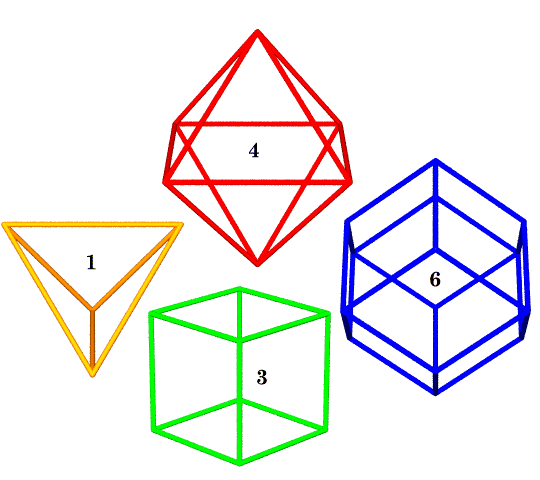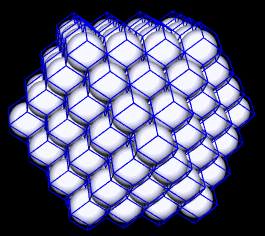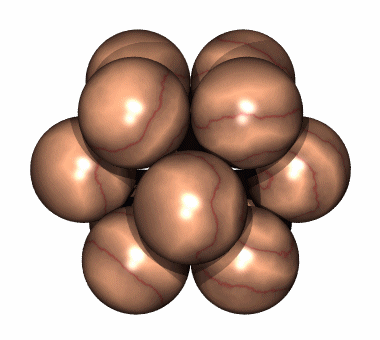The Synergetics Hierarchy
of Concentric Polyhedra
Part 1 of 2
Synergetics, departing from convention, replaces the cube with the regular tetrahedron as its principal unit of volume.
The four-sided tetrahedron is the simplest possible enclosure -- which is why mathematicians call it a "simplex". Drawn as a cage, or wire frame, it has four windows, four corners and six edges. No space-enclosing network has fewer windows (facets) than four. The cube (or hexahedron), by contrast, has six facets, eight corners, and twelve edges, whereas a geodesic sphere may consist of hundreds or even thousands of facets!
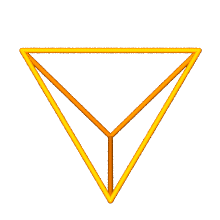
Given the status of the simplex as "simplest space-enclosing network", the decision to use its regular form as a unit of volume makes some sense. As a consequence of this decision, we obtain whole number volumes for other familiar shapes (including for the cube). This aesthetically pleasing and streamlining result provides additional reinforcement for those taking the time to learn this alternative (yet logical) approach to spatial geometry.
The tetrahedron has another interesting and unique property: its dual is also the tetrahedron. We get a shape's dual by switching faces for corners and vice versa, while keeping the number of edges unchanged. The cube and octahedron are duals, as are the cuboctahedron and rhombic dodecahedron.
The dual of a shape need not be any specific size, however we may specify that the edges of the two shapes intersect at right angles. By combining duals in this way, we define the vertices of additional shapes.
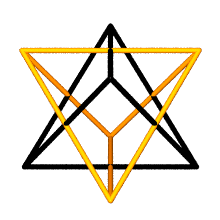
For example, the regular
tetrahedron and its dual (also a tetrahedron)
intersect to form a cube. Likewise, when we intersect the edges of
a cube with its dual, the
octahedron, we get the vertices of
a rhombic dodecahedron.
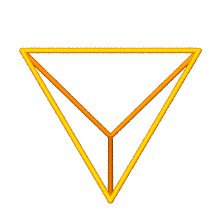
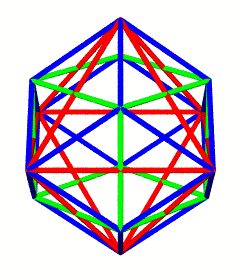
The volumes for the shapes mentioned and displayed so far are as follows:
|
Shape
|
Volume |
| Tetrahedron | 1 |
| Duo-Tet Cube | 3 |
| Octahedron | 4 |
| Rhombic Dodecahedron | 6 |
